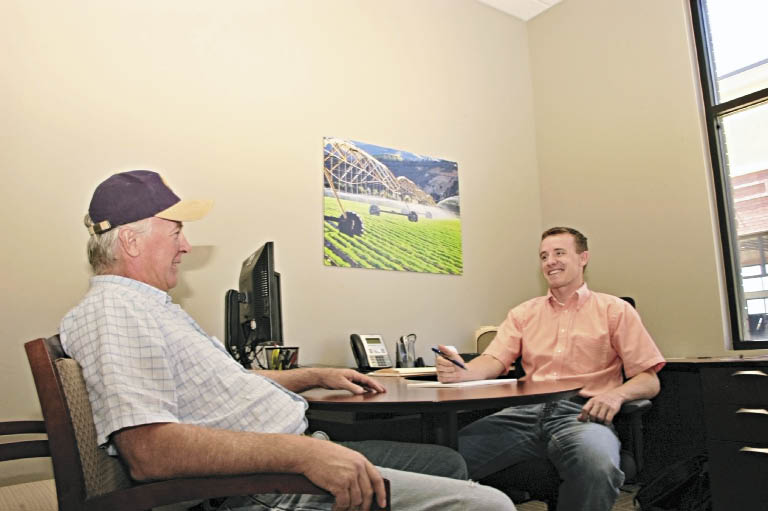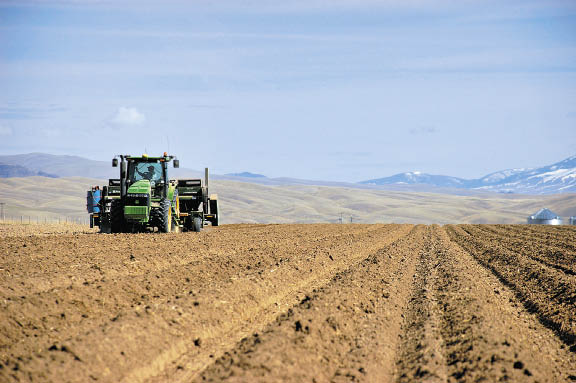 These are interesting times for growers across the country. While there are many challenges, historically low interest rates for both short- and long-term borrowings and the current rise in land values across the country create a number of opportunities. You can set your farm on a strong financial footing going forward with some careful planning today. You should consider interest rate risk management and how you utilize farmland equity to your full advantage.
These are interesting times for growers across the country. While there are many challenges, historically low interest rates for both short- and long-term borrowings and the current rise in land values across the country create a number of opportunities. You can set your farm on a strong financial footing going forward with some careful planning today. You should consider interest rate risk management and how you utilize farmland equity to your full advantage.
Sluggish economies and financial uncertainty throughout much of the world are driving both short-term and longer-term interest rates to historic lows. With the Federal Reserve indicating that short-term rates will stay low until 2014,
You may be tempted to keep much of your farm's debt at a cheaper variable interest rate. However, by doing this, you may jeopardize the opportunity to access historically low longer-term rates, which could save you money for many years to come.
In the United States, short-term interest rates are set by the Federal Reserve in its Open Market Committee meeting. Long-term rates are set by the market and based on the demand for these securities. In simple terms, if investors do not see a lot of opportunities to make money in other, more risky assets, they will buy Treasuries or other low-risk asset classes. This increased demand for Treasuries lowers the yield, bringing interest rates down.
 Normally, U.S. government debt offerings (Treasuries) have the lowest borrowing costs. Everyone else, including banks, borrow at some spread above the Treasury yield. While short-term rate increases can sometimes be predicted, long-term interest rates are very difficult to forecast. In other words, long-term and short-term rates do not always move the same direction or at the same time.
Normally, U.S. government debt offerings (Treasuries) have the lowest borrowing costs. Everyone else, including banks, borrow at some spread above the Treasury yield. While short-term rate increases can sometimes be predicted, long-term interest rates are very difficult to forecast. In other words, long-term and short-term rates do not always move the same direction or at the same time.
Term Debt Considerations - While both long- and short-term interest rates are currently low, it is difficult to forecast with any degree of accuracy when long-term rates will rise. One possibility could be that by the time the Federal Reserve raises short-term rates, long-term rates will have already risen substantially, and your opportunity to lock in today's low rates could be gone. If your farm has a market value debt-to-assets ratio of over 40 percent and you have a substantial amount of term debt (25 percent or more) on a floating rate, you may want to consider fixing the rate on a portion of that debt. Then if interest rates rise, you have hedged your borrowing costs.
Operating Lines of Credit - Sometimes in the potato industry, it can take 18 months or more from the initial cash investment until you sell your crop. Due to this long cash conversion cycle, many growers have a portion of their operating debt that is static, or always outstanding, no matter the time of year. If this static debt is on a floating rate, then there is a risk that interest expense will increase in the future, with rising interest rates.
In order to avoid this uncertainty, some growers are choosing to lock in today's longer-term rates on a portion of the static operating debt. For growers who have access to interest rate swaps, this can be an effective tool to help manage the interest rate risk associated with operating lines of credit.
Utilizing Real Estate EquityCommodity price increases brought about stronger real estate prices as well. You can make real estate equity work for the farm with a real estate secured-line of credit. This type of credit line can be obtained for terms from five to 15 years. Some growers use these lines of credit in place of their operating lines, which can reduce the hassle of renewals and lower the reporting requirements, as the underlying security is real estate. You can also use these lines of credit as a ready reserve for quick access to cash if the need arises.
 One example would be purchasing farmland. Sometimes being able to close a land sale quickly or make an offer that is not contingent upon financing can help you negotiate a better price or get the deal locked up, before everyone is aware of the transaction. After the purchase, the real estate-secured equity line of credit could be termed out or traditional term financing could be obtained on the new property and the line of credit repaid.
One example would be purchasing farmland. Sometimes being able to close a land sale quickly or make an offer that is not contingent upon financing can help you negotiate a better price or get the deal locked up, before everyone is aware of the transaction. After the purchase, the real estate-secured equity line of credit could be termed out or traditional term financing could be obtained on the new property and the line of credit repaid.
No one can predict exactly where interest rates or land values might be headed, but it's important for you to have a risk management strategy in place. You should look at your interest rate risk profile to see how exposed your operation is to a significant rise in interest rates. Then you can determine if it makes sense to fix some floating debt to hedge the risk of increased interest rates in the future. Using your real estate equity properly can help you react more quickly to opportunities or threats that can arise quickly.